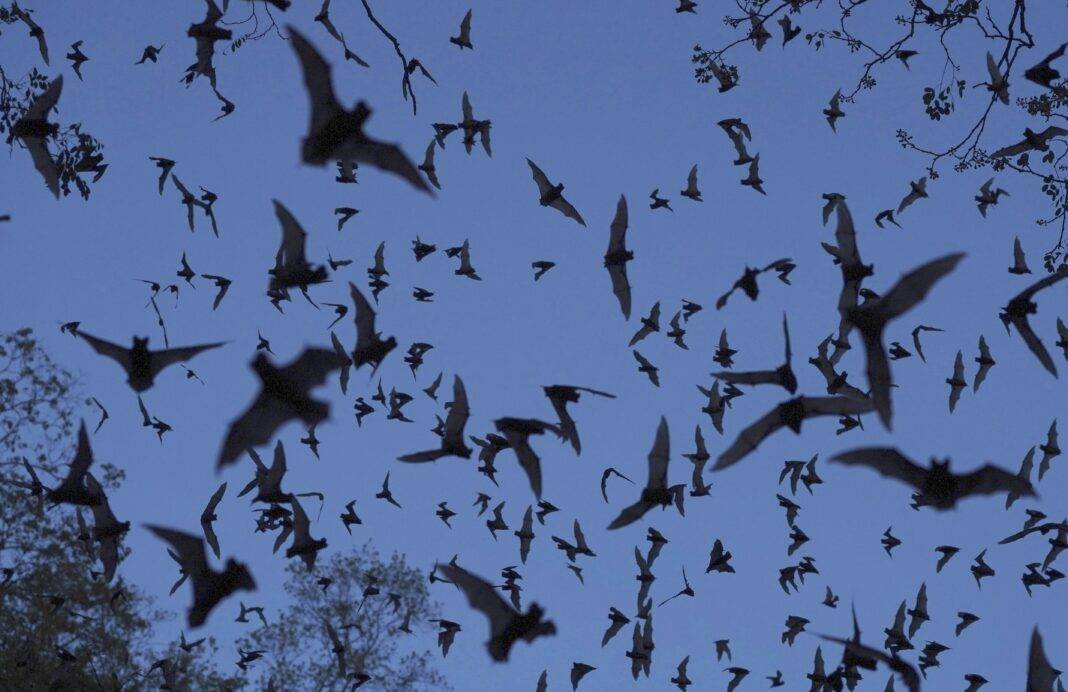This winter, Gotham Bat Conservancy and the nine native species of New York City bats were met with tremendous support from our community here in Brooklyn at our winter fundraiser. Thanks to the support of environmentalists and naturalists like you, we were able to secure funding for necessary supplies for another Bat Sanctuary here in New York City. We are excited to announce another opportunity for you to participate in bat conservation this spring, Earth Day, April 22.
This Earth Day we are hosting our first annual BATtle of the Bands at Pine Box Rock Shop starting at 6:00pm (music at 7:00pm) here in Brooklyn. Several local bands will perform for the title of NYC Bat Hero and to raise funds needed to support our growing Bat Sanctuary Program. Tickets are available on Gotham Bat Conservancy’s website. All funds raised directly provide materials to establish the remainder of our 2023 Bat Sanctuary site locations including bat houses, interpretive signage, plant materials for ecological restoration, and all other necessary supplies.
Bat species in our area, the Northeast and Mid-Atlantic regions, have experienced significant population decline. Bat species such as the Little Brown Bat, Myotis lucifugus, have declined by as much as 90% in the past 15 years — an unprecedented rate of decrease. This significant population decline severely decreases the beneficial impacts bats have on our environment such as pest population control, protection of agricultural crops valued at $23 billion annually, mitigation of the prevalence of zoonotic diseases such as West Nile Virus, and nutrient cycling services in the environment (guano, or bat excrement, is one of the most nutrient rich fertilizers on Earth).
Many of the greatest threats to bats are caused by habitat destruction, fragmentation, and degradation. Habitat destruction occurs when important habitats for shelter or the prey for bats are removed. Removal of trees (deforestation), development of open spaces for roads or buildings, and draining wetlands all reduce natural habitat for bats.
Fragmentation occurs when roads, farms, cities, and other developments divide and isolate habitats. This form of habitat loss is especially dangerous to bats and other migratory animals as it makes traditional travel paths disappear or become more dangerous, with less food and shelter available along the way.
Degradation occurs when chemicals or other factors cause an area to be unhealthy for bats, reducing the amount of appropriate areas for them to live. This can be a result of pesticide use, light pollution, or contaminated water. Invasive species of plants and/or animals can also drastically change an ecosystem and make areas unlivable.
Our Bat Sanctuaries serve as part of the solution for conservation of these highly important animals. Bat Sanctuary locations are a collection of parks, community gardens, natural areas, and other green spaces. These host locations provide a protected habitat that includes adequate roosting, natural food sources, and access to water. We are able to provide this by enhancing ecosystems with native plants such as important species of trees, flowering shrubs, and perennial flowers.
Additionally, Bat Sanctuaries serve as educational hubs for the public to engage with bats in a safe manner such as listening to and documenting bat sounds via bat detecting devices that pick up and enhance echolocation frequencies. With these devices we can learn what species of bats are present in our Bat Sanctuaries and track the growth of bat populations over time. Our Bat Sanctuaries also empower citizen scientists with the ability to record visual observations of bat species in our Citizen Science Project, increasing the amount of available data for scientists to track the size and movement of bat populations not just in our sanctuaries, but on a regional scale!
Creating Bat Sanctuaries within public spaces is an important part of rehabilitating our relationship with bats by inviting people to observe bats at an appropriate distance in an environment that is safe for all parties involved, fostering the much needed public support for bat conservation. Perhaps you would even like to see your local park become a Bat Sanctuary. We’d love to see that, too!
Gotham Bat Conservancy will ensure that bat species will repopulate areas that were previously removed from them. Our work allows populations to regrow, supports the spread of genetic diversity, and will ensure healthy environments that we all can live in and take pride in. The team at Gotham Bat Conservancy is excited to see the growing support from our community, and we will see you at the BATtle of the Bands!
Field Notes is a section in Bluedot Living Brooklyn dedicated to amplifying organizations doing important work in Brooklyn and beyond. Field Notes are authored by the organizations and edited for clarity by Bluedot. If you would like to submit a Field Note, email bl*****@br***********.com


